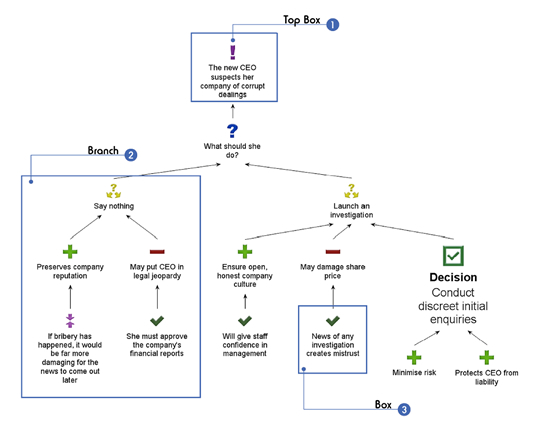Anatomy of a map
1. Top Box
The Top Box is the starting point for your map. Usually, it presents the topic or problem you’re addressing, or the question you’re trying to resolve. In a grouping map, it’s the broad theme that will be broken down into categories in lower levels of your map. (We call it the Top Box, and refer to ‘higher’ and ‘lower’ map levels, even though you can choose to orientate your map from left to right or even from bottom to top.)
2. Branch
A map box and all its descendants are known as a branch. A map will often consist of many branches, themselves containing sub-branches.
You can hide the descendants of a selected box by clicking on the small ‘subtract’ sign in its corner. To show the hidden boxes again, click the small ‘plus’ sign.
3. Box
A map is made up of boxes linked together. Every box has one parent (except the Top Box), and can have any number of siblings and children. All boxes below it are its descendants, and all boxes in a direct line back to the Top Box are its ancestors.
4. Map Origin
When a map is linear like this one, without branches, it’s not always obvious which box is the Top Box. The Map Origin line marks the Top Box in a linear map. It disappears when branches are added to the map.


